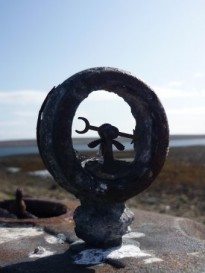My father grew up next door to his paternal grandfather John Ross; consequently he knew a good deal about his grand-uncles and grand-aunts, siblings of that grandfather. My father would recount how the oldest brother, Walter, and his three sons were all lost at sea. Apart from Walter himself the details were rather sparse and, as with all family stories, it’s wise to check things out.
Lost at the herring fishing
Walter Ross (1842-1892), brother of John, definitely did die at sea. Like other men in the North Walls area (link to map), he went to the herring fishing and it was there that he met his death by accidental drowning on 30 August 1892 about a mile off Rothiesholm Head (link to map), Stronsay, Orkney; death registered by James Robertson, skipper.1Deaths (CR) Scotland. Walls, Orkney. 30 August 1892. ROSS Walter. 032/1 13. Also RCE 1892 vol 1 p 20. This and other records from Scotland’s People. My father did not know the exact date though he had most of the facts and supplied the additional information that Walter was knocked overboard by a sail on the fishing boat named the Berbice.
Walter left a widow Jemima and four children, Walter, Jemima, Andrew and Hugh, aged from 16 to 3.
A slight digression. One element of Walter’s story puzzles me. Censuses from 1871-1891 list him first as apprentice blacksmith and then blacksmith, the only blacksmith in the North Walls area and one of only two in the parish of Walls. Why did he need to supplement his income by going to sea? Neighbouring crofters in their evidence to the Crofters’ Commission in the late 1880s stated that they were struggling to pay rent because they could no longer rely on income from herring fishing. It may be that his business suffered from the downturn in both fishing and farming. Whatever the answer, his death was a tragedy, intensified by that of his father Hugh Ross (1816-1892) about four months later.
Sailor sons
In the later 1890s Walter’s widow Jemima Nicholson (1853-1925) and family moved to Stromness, Orkney. The 1901 Census recorded their daughter Jemima, 20, shop assistant, and youngest son Hugh, 12, scholar, in Stromness while their mother Jemima was a sick nurse at Balfour Castle, Shapinsay, Orkney, on census night.2Census 1901 Scotland, Stromness, Orkney, ROSS, Jemima (head). 030/ 6/ 1. Also Shapinsay, Orkney. ROSS, Jemima. 028/ 1/ 1.
Going back to information from my father he had said that two sons were in the Merchant Navy and one in the Royal Navy, maybe in Australia. So it was reassuring to find Andrew, the middle son, recorded as an 18-year-old ordinary seaman on the Janet, of St Margaret’s Hope, Orkney, in port at Inverkeithing, Fife, on 31 March 1901, census night.3Census 1901 Scotland, Shipping – Merchant Navy. ROSS, Andrew. 903/S 15/ 14. No trace of Walter, the eldest however.
My other clues were death dates for both Walter and Hugh from the family gravestone in Stromness, 23 September 1909 and 26 September 1911 respectively.
Hugh Ross (1888-1911)
It was youngest son Hugh’s death I found first, in the Scottish Marine Returns (available on the Scotland’s People website) though he died in Liverpool.4Deaths (CR) Scotland. Marine Returns. 26 November 1911. ROSS, Hugh. 028/ MR 0167.Technically he did die at sea for his body was found in Liverpool Docks after he had gone missing from the Princess Patricia, steamship, port of Glasgow. He was a ship’s carpenter.
The Orcadian (Orkney newspaper) carried a report of his death (30 September 1911, p 4 Death of a Stromnessian).
“He served an apprenticeship for a joiner with Mr S Baikie at his saw mill [in Stromness], and worked for some time with Mr Wm Sinclair, joiner. A little over a year ago he joined the ss Princess Patricia, on which vessel he has been ever since. He was twenty-three years of age, and of a quiet, retiring disposition. He was well known and respected here [Stromness].”
Walter Ross junior (1875-1909)
Oldest son Walter’s death, almost exactly two years earlier in 1909, was harder to find. Masters and Mates certificates on Ancestry provided valuable information, not least in confirming that he did indeed go to sea too. Further they showed that he gained 2nd Mate’s certificate in 1900 and 1st Mate in 1904.5British Board of Trade. Mates and Masters Certificates. 9 February 1900. ROSS, Walter. Second Mate. 30 August 1904. ROSS, Walter. First Mate. Certificate no 034916. Collection: UK and Ireland, Masters and Mates Certificates, 1850-1927. www.ancestry.co.uk. (Original records at UK National Maritime Museum, Greenwich.)
The applications for examination for these “tickets” can be a source of very useful biographical and wider information. In Walter’s case his service record showed he first went to sea aged around 18 but it was his permanent residence at the time of his 2nd Mate’s application that was potentially more significant: c/o Mrs Roseware, 21 Drake Street, South Shields [County Durham]. Considering that he gave the address of his paternal aunt Williamina Lennie (née Ross) on his 1st Mate’s application it seemed possible, even likely, that Mrs Roseware was also a relation.
With that information about South Shields noted, an index entry for the death of a Walter Ross, 1909, South Shields registration district, looked very promising. The actual death registration confirmed that it was the right Walter. It was not the fact that he was described as “Seaman (Mate) Merchant Service” that clinched it, for there could have been more than one Walter Ross, but the informant’s name and address removed any doubt: J Ridley, cousin, 12 Portberry Street. The cause of death was laryngitis, pneumonia and heart failure.6Deaths, England, South Shields, 23 September 1909, ROSS, Walter, entry 181. So yes a sailor but not lost at sea.
The background on the informant, J Ridley, is a bit convoluted so I’ve consigned it to a paragraph at the end. (Carry on reading from here if you jumped to the paragraph at the end)
Don’t forget death notices
Ironically, I later found a death notice that contained all the core facts and would have saved me work.

Andrew Ross (1882-1943)
Andrew, the middle son, eluded me for years. If any of the three was going to be in Australia it had to be him. The “maybe in the Australian Navy” from my father lead me to WW1 records, a false trail, but then I spotted a possible match on a merchant ship around Australia. That certainly fitted with him being a seaman in the 1901 Census (see above). The absence of his name on the family gravestone in Stromness suggested that he might have died after his mother, therefore after 28 March 1925. His middle names, Fairlie Wilson, were another possible way to distinguish him from other Andrew Rosses, assuming they were used in records. (He seems to have been named after the doctor in Walls around the time of his birth – Andrew Fairlie Wilson.)
A few weeks ago I put his name into a search on Ancestry one more time and found a possible match in the index to New Zealand death records. Age correct, almost matching middle names (Ferlean Wilson). Record ordered; impatience curbed.
Here’s the record.

Is it him? Andrew Ferlean Wilson Ross died 12 December 1943, Picton Hospital, aged 61 – age correct. Occupation labourer and seaman, that fits. Parents’ names not known – frustrating. Birthplace near enough (“Stronmers [Stromness], Orkney Island”); though he was born in Walls, the family moved to Stromness. I’m as sure as I can be that this is the right man. He’d been in New Zealand 26 years.
A seaman but not lost at sea. Had he lost contact with his family back in Scotland? His sister Jemima (married to James D Brown) did not die until 1959, in Edinburgh, and her three sons and daughter outlived her so it’s not that there was no family.7Deaths, St Andrew, Edinburgh, 13 October 1959, ROSS, Jemima. 685/2 661. Another piece of work to explore Andrew’s life.
The search’s end
I’m glad that my father’s information was indeed quite accurate, father and all three sons did go to sea, two did die at sea. Yet there’s a disappointment or more accurately, perhaps, a sadness, for a few reasons. I had hoped that Andrew might have married, had a family and carried on the Ross name; it seems not. But more than that, there is no-one with a compelling interest in my findings for my father, who would have been very engaged, died over 16 years ago while Jemima, sister of Walter, Andrew and Hugh, has no known descendants. None of her three sons, George William Brown, James Dewar Brown and Walter Ross Brown, had children and her only daughter Gladys Mary Brown never married.
I’m hoping that some descendant of Walter Ross senior’s wife Jemima Nicolson’s many siblings may chance upon this blog and find answers to a few questions. Jemima’s dates are 1853-1925 and she was the daughter of Hugh Nicolson and Isabella Campbell, Crockness, Walls, Orkney. I’d be interested to hear also from any descendant of James Robertson who was skipper of the Berbice when Walter Ross senior was lost.
Walter Ross junior’s death – more information
Only read if you can cope with detail! Walter Ross junior’s aunt, Isabella Nicolson, sister of his mother Jemima, was one of the 1861 North and Brims Census population that I have been tracking for years in my one-place study. Isabella married first Henry Smith, a merchant seaman, with whom she had two daughters: Isabella (1869-1869) and Jemima (born Kirkwall, Orkney, 1874). In following up on Isabella I’d discovered that she remarried in 1878 to John Roseware or Rosewear, in South Shields registration district. That explained the name and address on Walter’s 2nd Mate’s application mentioned above. “J Ridley” who registered Walter junior’s death was Jemima Smith, daughter of Isabella Nicolson. This Jemima married Robert Ridley in 1897, again in South Shields.
One-place studies, setting your family in a wider context, can be very useful in identifying and tracking people. Go back up the page.

